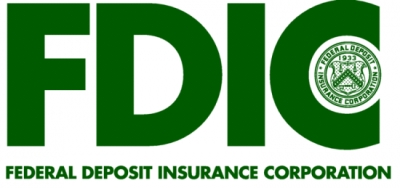Bank Closings
admin on 06 12, 2010
This week we only saw the FDIC close one bank, Washington First International Bank, with $520.9 million in assets and $441.4 million in deposits. We can not take one week of only one bank being closed as a great sign.
“With 82 closures nationwide so far this year, the pace of bank failures is more than double that of 2009, which was already a brisk year for shutdowns. By this time last year, regulators had closed 37 banks. The pace has accelerated as banks’ losses mount on loans made for commercial property and development.”
In 2009, there were 140 bank failures with assets totaling $170.9 billion and at an estimated cost to the FDIC’s of $36.43 billion. This makes the 2009 percentage loss to the FDIC about 21%. So far in 2010, there are 82 closures with $71.5 Billion in assets with an estimated cost of $17.2 Billion to the FDIC. This brings the percentage loss to 24%. Washington First International Bank’s assets of $520.9 are expected to cost the FDIC $158.4 million or 30.4% of assets.
May: 14 bank failures, assets $6.25 billion and cost of $838.4 million or 13%*
*This was buoyed by Tierone Bank with assets totaling $2.8 billion and cost $297.8 million or roughly 10.6%
April: 23 bank failures, assets of $39.0 billion and cost of $9.42 billion. 24%
While it seems that the rate of closures is slowing and the percentage is decreasing, we are still at a very high pace for the year. This combined with more banks being added to the watch list everyday does little to raise confidence that we are near a bottom.
Since Congress changed FASB rule 157 there is no transparency in the banks so they are one of the worst places to invest. If we use the loss percentage to the FDIC of 20% to compare to the industry, we can honestly say that banks are sitting on huge potential losses hidden in their level three assets. These assets are no longer marked to market, they are marked to fantasy levels set by the banks.
How long will interest rates stay low and allow the banks to profit from the yield curve? We know that the Fed and Treasury will forecast this move to the banks with plenty of lead time. The current profits generated by the banks are supposed to sure up their ratios for lending, but the banks are being very strict on their lending policies. It is only natural to tighten the purse strings when you have huge losses on your books.
Two ways to profit in the future: sell banks or buy a bank inverse and buy interest rate products. Check out the SKF analysis under the Trades category.
Popular Posts
Recent Posts
Recent Comments
- CheapIV.com » Why You can Throw Traditional Diversification in the Trash: ... have spent their
- Tim Geithner – China’s Laughing Boy - Trade the E-minis: ... Learn how Timmy
- Tim Geithner – China’s Laughing Boy | Notes from the E-mini Trading Professor: ... Learn how Timmy
- Swing Trading Stock: ... Learn Timmy Next
- Timmy Geithner has Cried “Wolf” Too Many Times | THE ART OF EXCESS: ... Learn how Timmy

